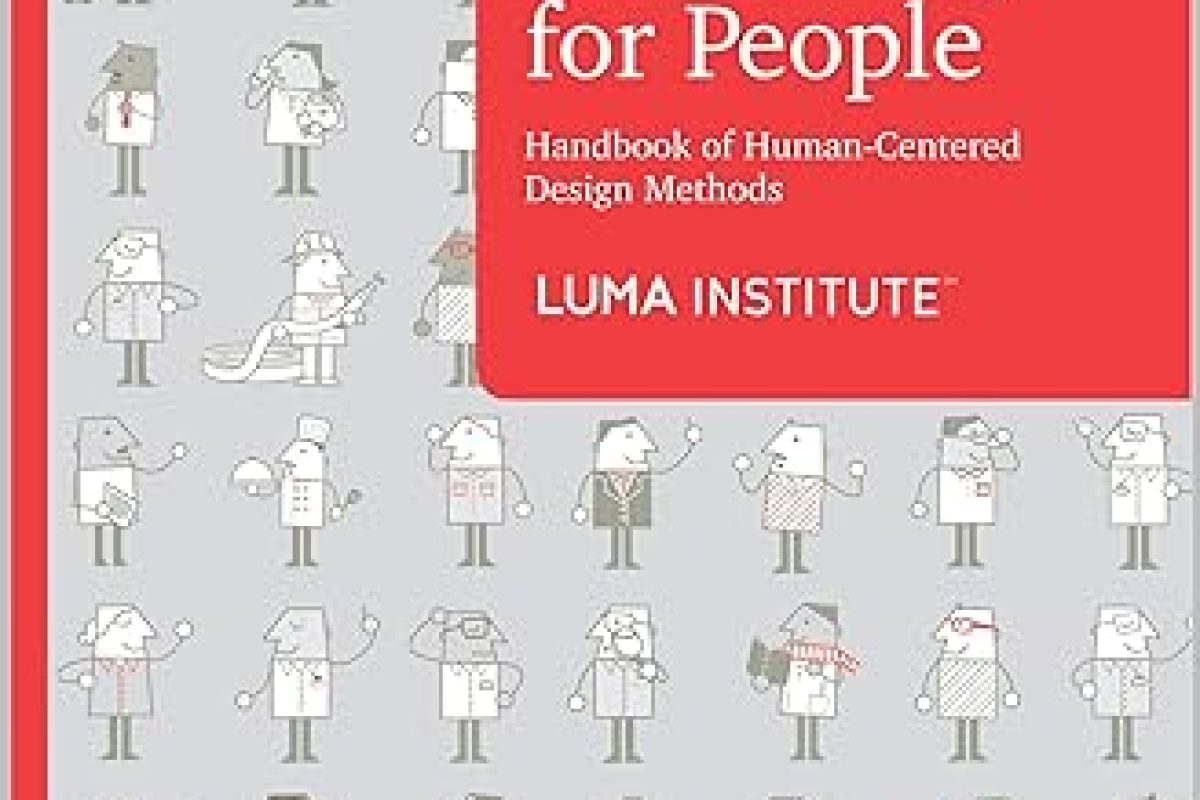“Innovating for People: Handbook of Human-Centered Design Methods,” published by the LUMA Institute, serves as an invaluable resource for designers, innovators, and anyone involved in the creative and product development processes. This handbook is a practical guide that distills complex design principles into accessible, actionable methods that can drive innovation and ensure solutions are centered around the human experience.
The book is compact yet comprehensive, comprising over 50 methods organized into three key categories: Looking, Understanding, and Making. This structure is based on the LUMA System of Innovation, a framework designed to enhance the way teams collaborate and innovate. Each category is designed to help teams and individuals through different stages of the problem-solving process. “Looking” methods focus on observing the world and gathering insights; “Understanding” techniques emphasize analyzing information and synthesizing ideas; and “Making” methods deal with building prototypes and iterative testing. This tripartite framework supports a fluid, dynamic approach to design thinking and ensures that all aspects of an issue are considered.
One of the book’s strengths is its layout and design, which is both user-friendly and aesthetically pleasing. Each method is presented on a two-page spread that outlines what the method is, why it is used, how to apply it, and a real-world case study that illustrates the method in action. This format is particularly useful for quick reference and makes the content highly accessible for both novices and experienced practitioners. The visual consistency across the book helps in reinforcing the methods and makes the handbook easy to navigate.
The LUMA Institute’s emphasis on practical application is evident throughout the book. Each method is not only clearly described but is also complemented by detailed diagrams, step-by-step instructions, and tips for best practices. This practicality extends to the case studies provided, which come from a variety of industries and offer insights into how these methods can be applied in different contexts, from small startups to large corporations.
Moreover, “Innovating for People” advocates for a democratic approach to innovation. It underscores the belief that everyone can contribute to the design process, regardless of their role or expertise. This inclusive philosophy is a refreshing aspect of the book and is pivotal in encouraging a culture of collaboration and creativity within organizations.
Additionally, the handbook does not merely present methods; it also encourages a mindset. It subtly guides readers towards adopting a holistic view of innovation—one that considers the complexities of human behavior and the real-world implications of design decisions. This focus on human-centered design is what makes the handbook not just a tool for creating products, but a guide for solving real human problems.
“Innovating for People” is ideal for those looking to embed human-centered design principles into their workflow but unsure where to start. It is equally valuable for experienced designers seeking to refresh their knowledge with a structured and systematic approach to innovation. The book’s actionable content, structured presentation, and broad applicability make it a critical addition to the library of anyone involved in product development, service design, or process improvement.
In conclusion, the LUMA Institute’s “Innovating for People” is more than just a handbook—it is a comprehensive guide that empowers readers to transform abstract ideas into tangible, human-centric solutions. It stands out as a practical, insightful, and essential resource for fostering innovation in any organization.




